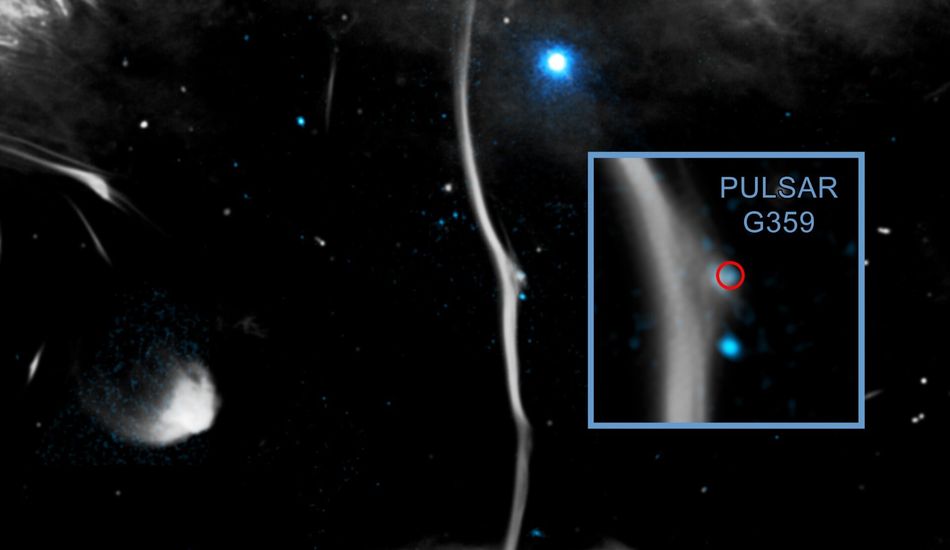
Pulsar Collision Fractures Galactic Filament
A remarkable discovery has unveiled a violent cosmic event within our Milky Way galaxy. Astronomers have observed a significant disruption to G359.13, a galactic filament – sometimes described as a "bone" – stretching an impressive 230 light-years. This structure, composed of parallel magnetic fields and high-energy particles, shows a clear fracture, its magnetic field distorted in a manner strongly suggestive of a high-impact collision.
Unmasking the Culprit
Using data from the Chandra X-ray Observatory and the MeerKAT radio array, researchers have identified the likely culprit: a high-velocity pulsar. This rapidly rotating neutron star, a remnant of a supernova explosion, appears to have collided with G359.13 at an estimated speed of one to two million miles per hour. The impact created a shockwave that warped both the filament's magnetic field and its radio emissions, resulting in the observed fracture.
The images, strikingly similar to medical X-rays of a fractured bone, clearly show the X-ray and radio source at the fracture point. This source is attributed to the acceleration of electrons and positrons by the pulsar's energy. The pulsar itself is visible due to its distinct X-ray emissions, effectively caught in the act.
Galactic Collisions
This event highlights the dynamic and often violent nature of our galaxy. Such collisions, while dramatic, are not uncommon in the Milky Way's crowded environment. The continued development of powerful observational tools, like Chandra and MeerKAT, allows for the detection and analysis of these previously elusive cosmic events, providing unprecedented insights into the evolution and structure of our galactic neighborhood. The discovery is a testament to the power of collaborative research using multiple data sources to solve cosmic mysteries.
1 Image of Galactic Collision:


Source: Gizmodo